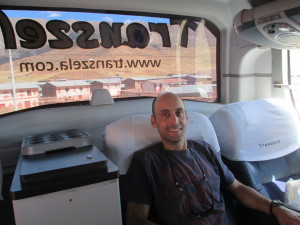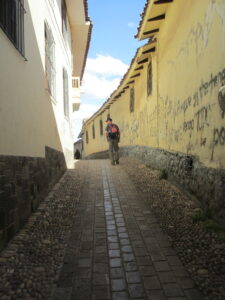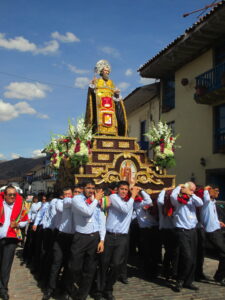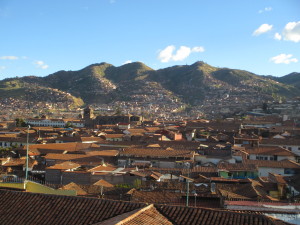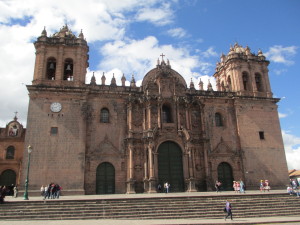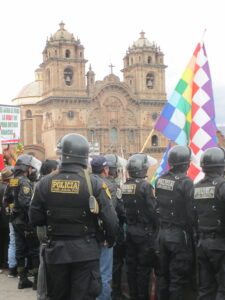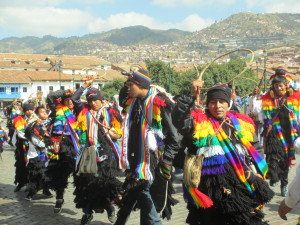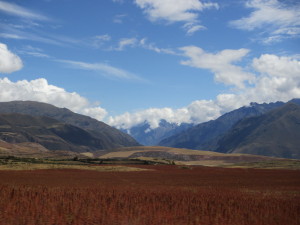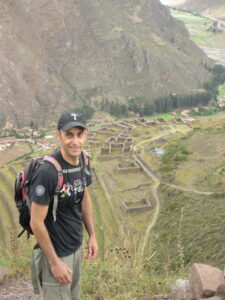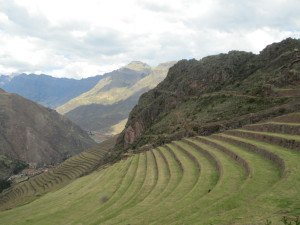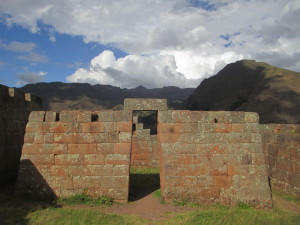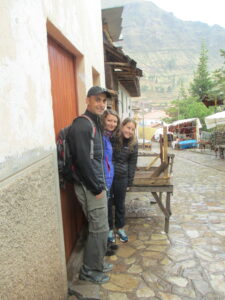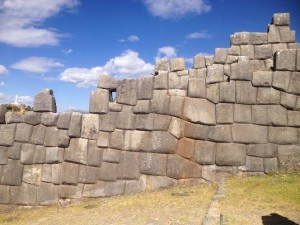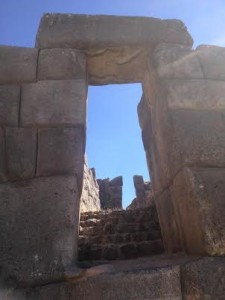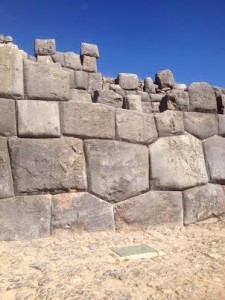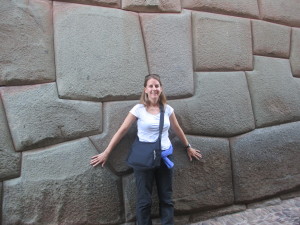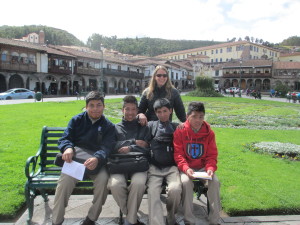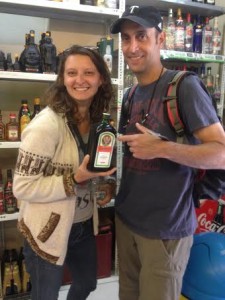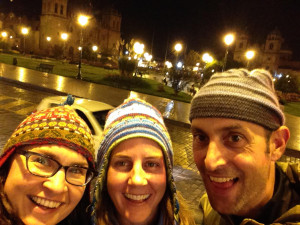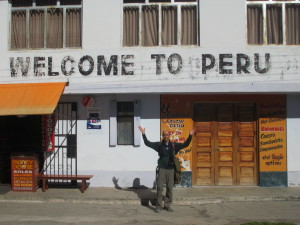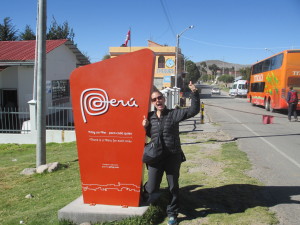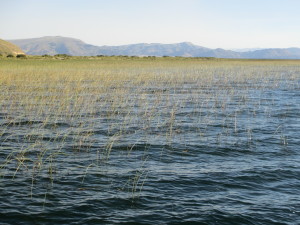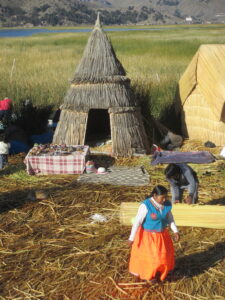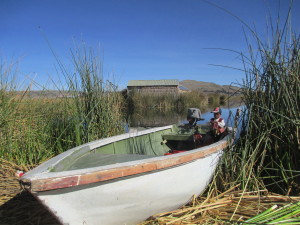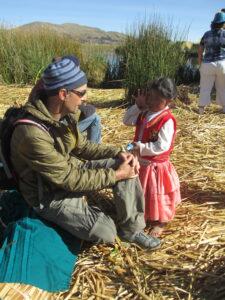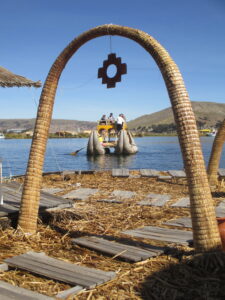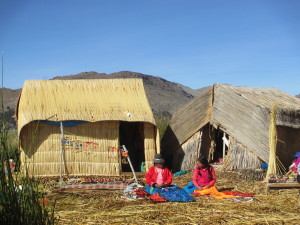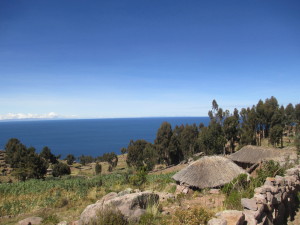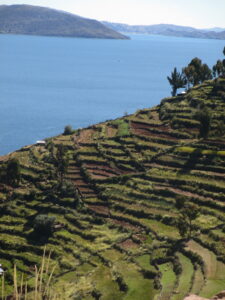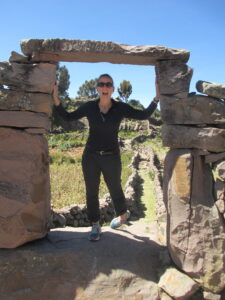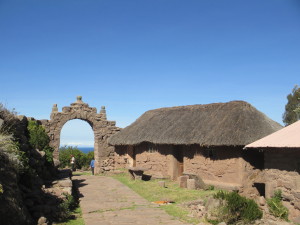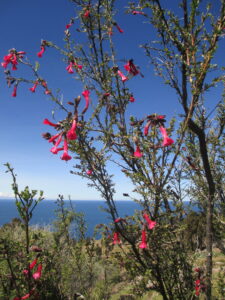We were smitten with Lake Titicaca. The Bolivian side and the Peruvian side were both beautiful and special in their own ways and we enjoyed spending a whole week on the lake. Now we were ready to move on to visit Cusco, the super-touristy, high-elevation, always-up-for-a-parade city that we’d heard so much about.
The bus from Puno to Cusco was seven hours. The bus was new and clean, and our seats were big and comfortable. We could hardly believe our luck! Except for one thing: our seats were in the very back row. Despite my “queeze-free wristbands” I only lasted a half hour or so and then moved to a seat closer to the front so I wouldn’t get carsick. Harry, on the other hand, clearly enjoyed his seat and stayed put.
Cusco
Cusco, once the capital of the Inca Empire, is the most visited city in Peru. Most visitors visit Cusco to access the Sacred Valley and Machu Picchu. While the majority of visitors only stayed a few days, we spent a total of 10 days because it was a really interesting and comfortable place to be. There were a lot of great food options, many wonderful places to explore, and important Inca culture and history to learn about.
Our main goal while we were in Cusco was to plan our trip to Machu Picchu. Many people book their trip online months in advance, but we purposely waited until we got to Cusco before we made any decisions. We ended up spending a lot of time over the span of many days talking with different people and agencies to determine what our trip would look like. Machu Picchu is supposed to be such a special place that I really wanted our journey there to be perfect.
Located at 11,200 feet in the mountains, Cusco has a reputation for causing altitude sickness in many travelers. Luckily, all our time spent in the mountains of Bolivia paid off because we were well-acclimatized. The nights were cold due to the high elevation, but the days were warm and sunny.
We enjoyed walking around the narrow cobblestone streets and getting lost in the myriad of alleyways. There were numerous parades and protests to observe and interesting Spanish architecture to take in. The main square was a beautiful place to pass the time.
Sacred Valley
Located in the Andes mountains, the Sacred Valley essentially encompasses the heartland of the Inca Empire. The valley generally includes everything between Cusco and Machu Picchu and contains numerous archaeological sites and villages. We really wanted to connect with the history of the land before visiting Machu Picchu so we spent some time exploring the beautiful valley.
Pisac
Pisac is well known for its large, colorful market in addition to the massive ruins above town. With our Polish friend Aga, we visited Pisac via a local bus and spent the afternoon walking around the ruins. The drive through the mountains was beautiful and the town was quaint and lovely.
Saksaywaman
Located in the hills above Cusco, this former Incan citadel is now essentially a considerable park spread out over an impressive amount of land. We walked up to the ruins on a Sunday afternoon and were pleased to see so many locals enjoying the space. There were family picnics and soccer games happening all around.
Would you look at those Incan bricks?! Even the non-engineers among us can appreciate the skill and precision with which they built structures.
Cusco turned out to be a place where we reunited with some of our traveling friends, including Lilia (Canadian) and Aga (Polish). We spent some quality time with both of them and enjoyed their company immensely. Lilia taught us a new word for our woolly hats — toques — so now I can say that I speak English, Spanish and Canadian. We also met some local middle school boys in the main square who were eager to practice their English with us. It turns out that they were more than happy to pose for a picture as well.
Next up: Machu Picchu
Visiting Machu Picchu has been on the top of our “must do in South America” list and we were more than eager to experience this famous place. Stay tuned to find out how we ended up getting there and back… there was quite possibly a tuk-tuk involved.

